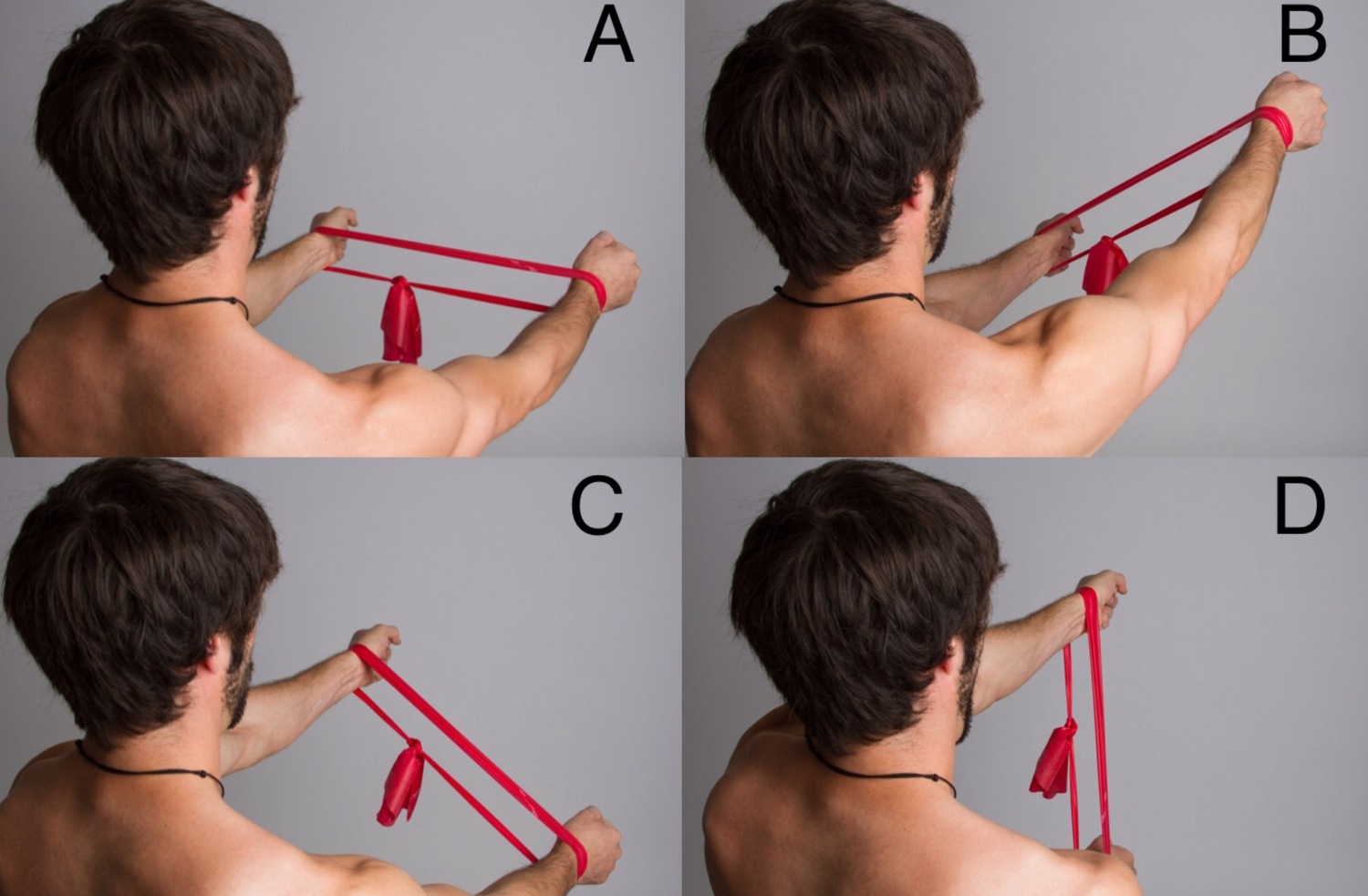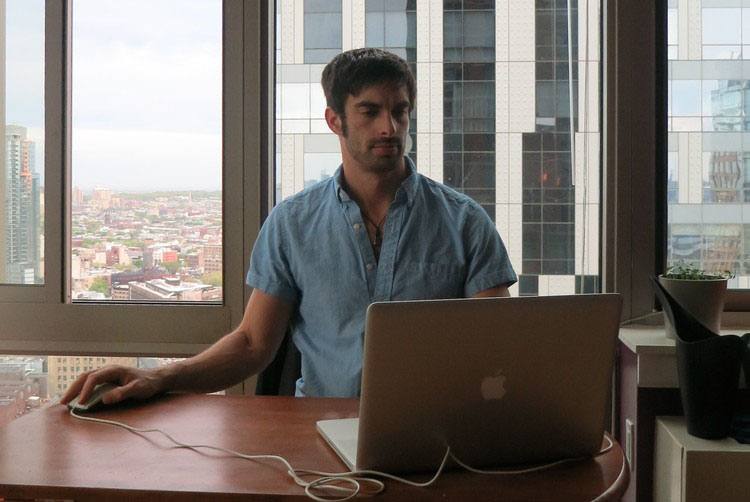Most climbers don’t have a clue how to properly train. The lack of knowledge can lead to plateaus in performance and can cause injury. This submission is part of an effort to apply hard science to climbing. It teaches you how to strengthen your shoulder in functional positions that are encountered while climbing.
I am frequently asked the question, “What is a good way to strengthen my rotator cuff?” The answer varies based on what activities you are participating in. For example, I commonly see climbers standing rotating a weight at their torso in an attempt to strengthen their shoulders.

This may be acceptable if you are sedentary and your primary activity is using a mouse or typing at a keyboard because the motions are similar. However, this type of strengthening is useless and by no means reflects the demands on the rotator cuff during climbing. For a shoulder exercise to be effective it needs to be functional. For climbers, this means that the exercise must mirror what your shoulders do when you climb. The elbows need to be straight and the arms must be shoulder height or higher to reflect the true arm position on the wall. Below is an exercise that strengthens the rotator cuff in the way that it is used while climbing.
Rotator cuff exercise — wall clocks
How often
Perform reaches for 20 to 60 seconds, lower and repeat for 3-5 sets.
What it does
Strengthens your rotator cuff muscles by simulating the action of reaching climbing holds in varied positions.
What to do
Wrap a single resistance band around your wrists and make your hand into a fist. Press your fists gently into a wall and imagine there is a clock in front of you with twelve o’clock at the top and six o’clock at the bottom. Press your wrists outwards on the band, keep your elbows straight and reach out towards:
- A: 3 o’clock.
- B: 1 o’clock.
- C: 5 o’clock.
- D: 6 o’clock.
Repeat with the opposite arm for 9, 11, 7 and 6 o’clock.

Dr. Jared Vagy is a Physical Therapist and an authority on climbing related injuries. He received his Doctorate in Physical Therapy from the University of Southern California. He is board certified as an Orthopedic Clinical Specialist from the American Physical Therapy Association. He has over ten years of climbing experience and has climbed all over the world. Climbing and injury prevention are his passions and he is committed to combining the two. Special thanks to Ari Kirsch for photography.
References
Malliou PC, Giannakopoulos K, Beneka AG, Gioftsidou A, Godolias G. Effective ways of restoring muscular imbalances of the RTC muscle group: a comparative study of various training methods. Br J Sports Med. 2004;38:766–772.
Reinold MM, Wilk K, Fleisig GC, et al. EMG analysis of the rotator cuff and deltoid musculature during common shoulder external rotation exercises. J Orthop Sports Phys Ther. 2004;34:385–394.
Van der Heijden GJ, van der Windt DA, de Winter AF. Physiotherapy for patients with soft tissue shoulder disorders: a systematic review of randomized clinical trials. BMJ. 1997;315:25–30.
Wilk KE. Current concepts in the rehabilitation of athletic shoulder injuries. In: Andrews JR, Wilk KE, eds. The Athlete’s Shoulder. 1st ed. Philadelphia, Pa: WB Saunders; 1994:335–368.
Kramer WJ, Ratamess NA. Fundamentals of resistance training: progression and exercise prescription. Med Sci Sports Exerc. 2004;36:674–688.
Want more climbing content? Get our awesome climbing newsletter, delivered weekly.
Explore more
- Our 40+ most popular articles ever
- Today’s Best Rock Climbing Gear Deals
- 200+ rock climbing videos
- Two Effective Fingerboard Protocols from Eric Horst
- 4 Simple Ways to Combat Climber Posture
- Planning the Training Plan to Become ‘Rock Prodigies’
- 25 Books Every Climber Should Read
- How to Recover Faster While You Sleep
- Strength or Power? Improving Your Climbing with Plyometrics Training
- The Power of Isometric Contraction for Rock Climbing Training
- What’s In Your Pack: Jonathan Siegrist on His Projects, Climbing in Spain, and Gear Tips
- Brutal Garage Training with Loic Timmermans
- How to Improve Your Climbing Mobility, Part 2: Myofascial Release
- Get daily updates by Liking us on Facebook
- Free rock climbing PDFs on technique, training, knots, and more








